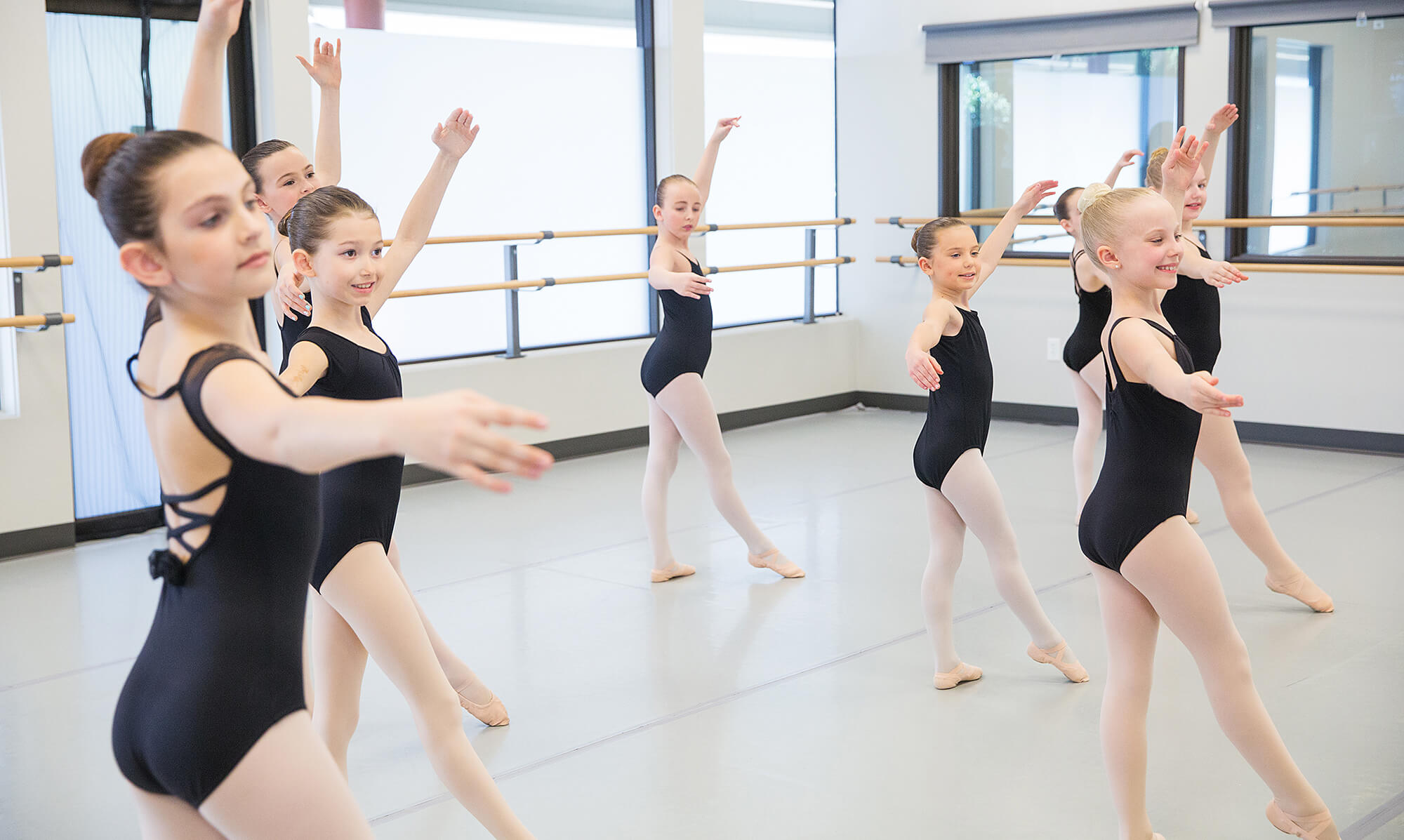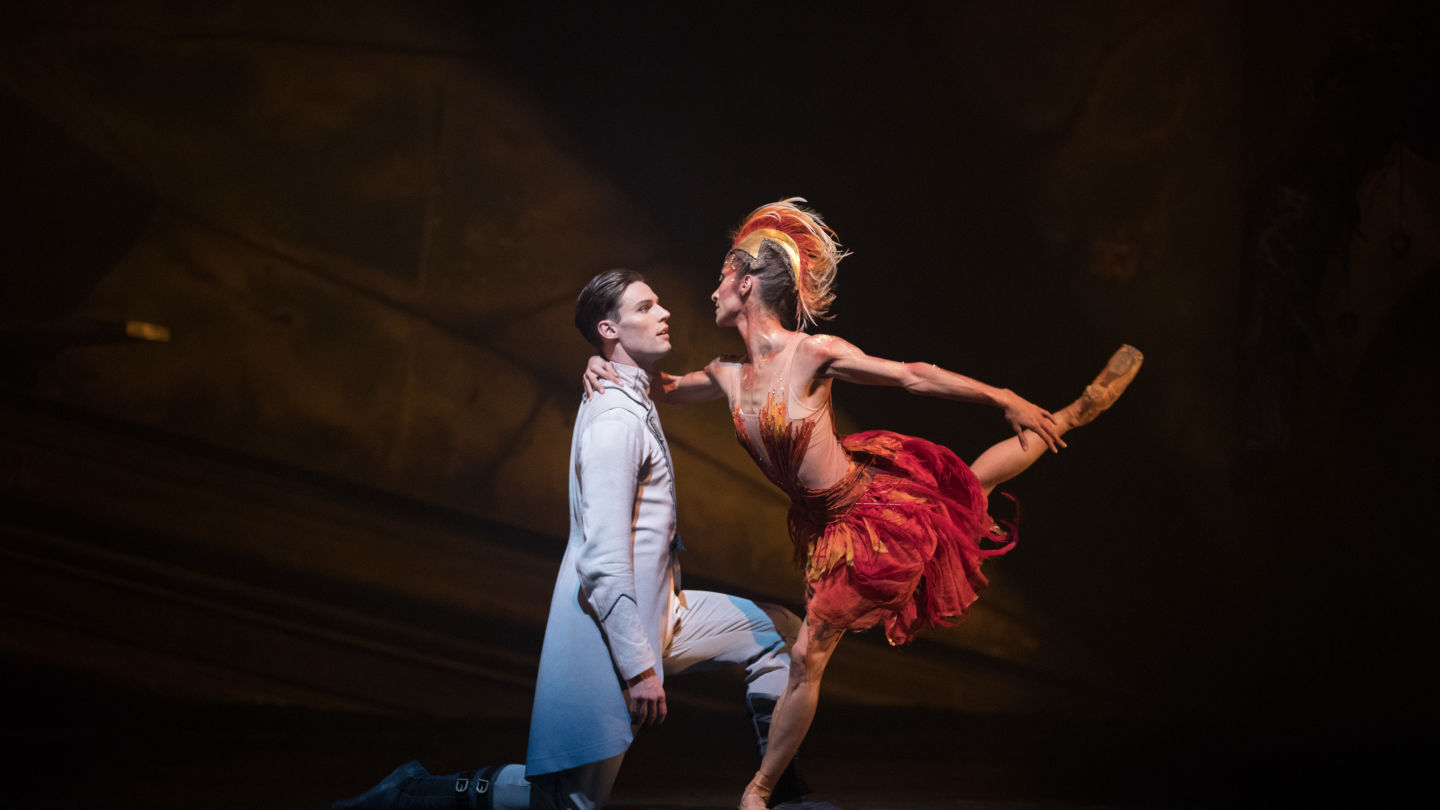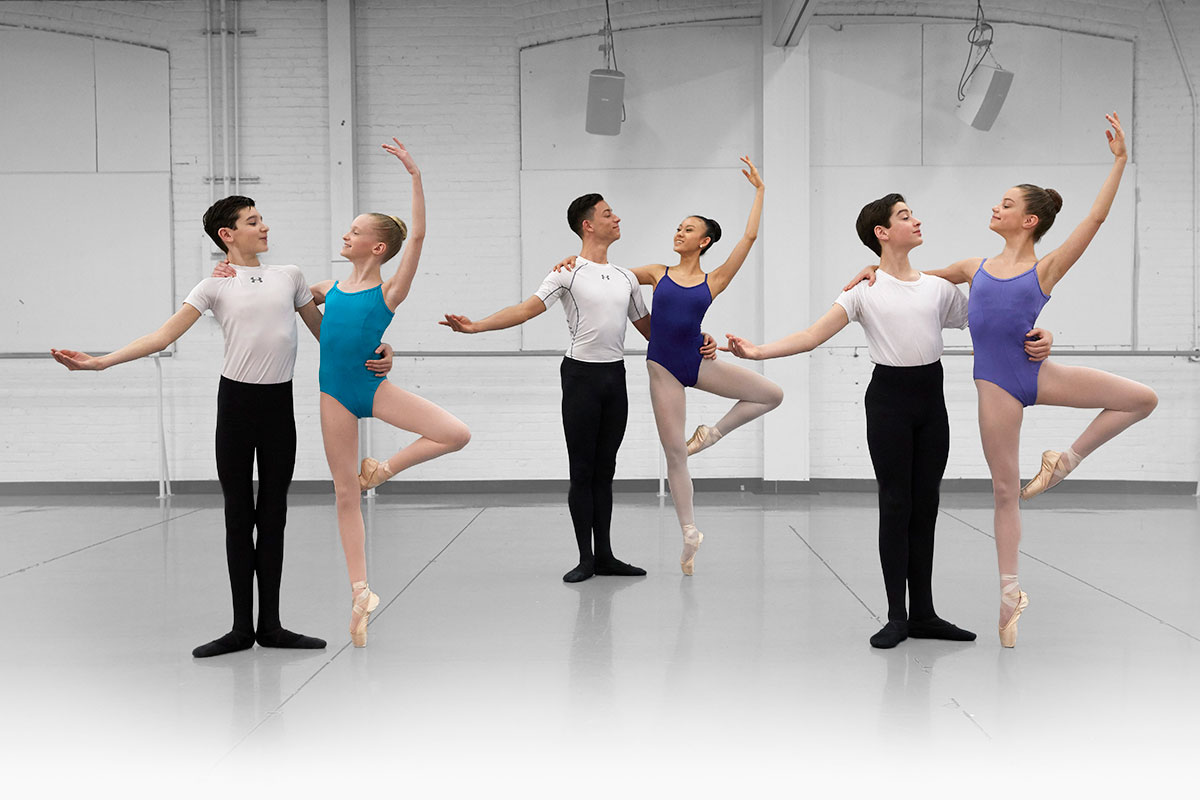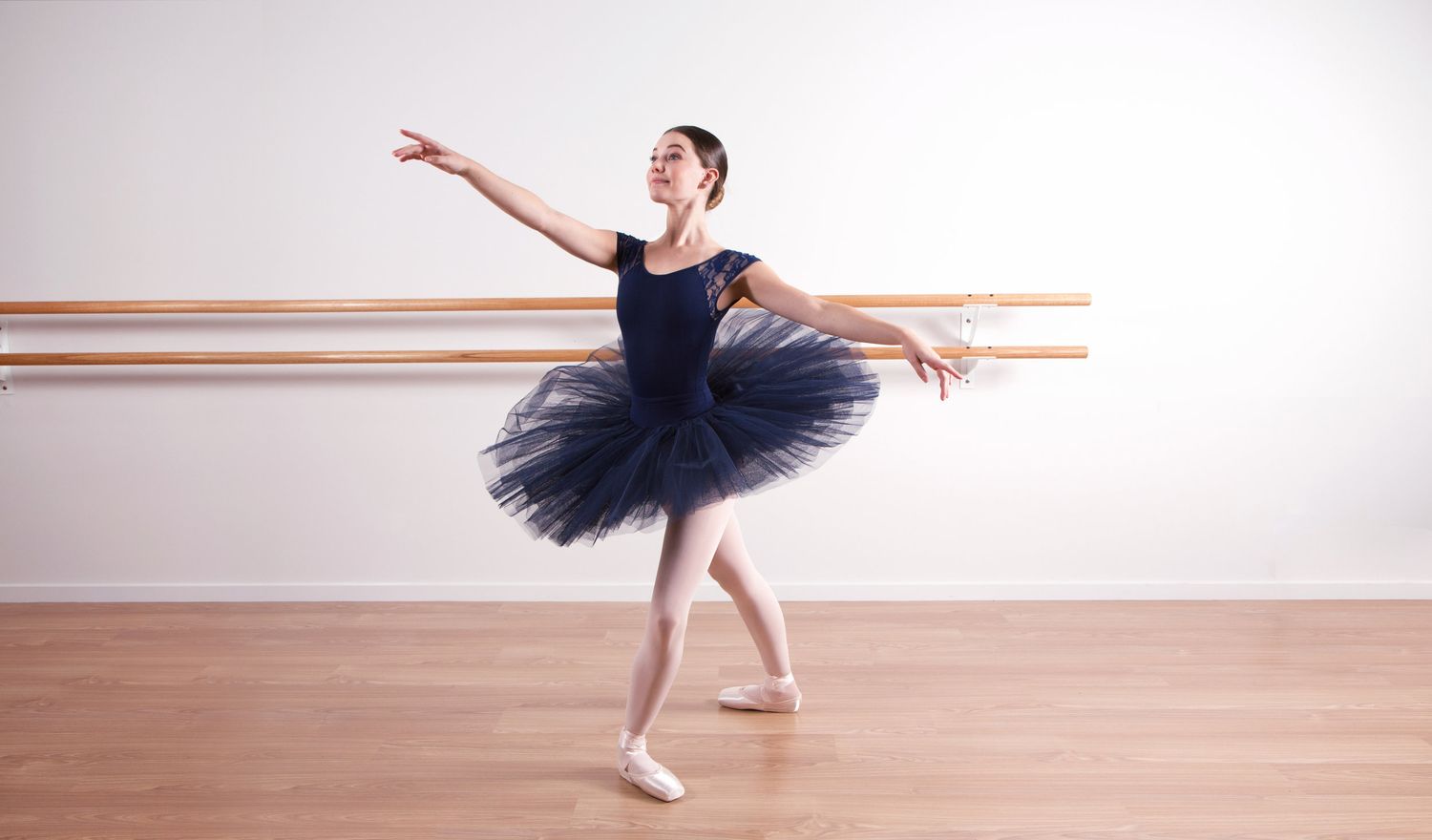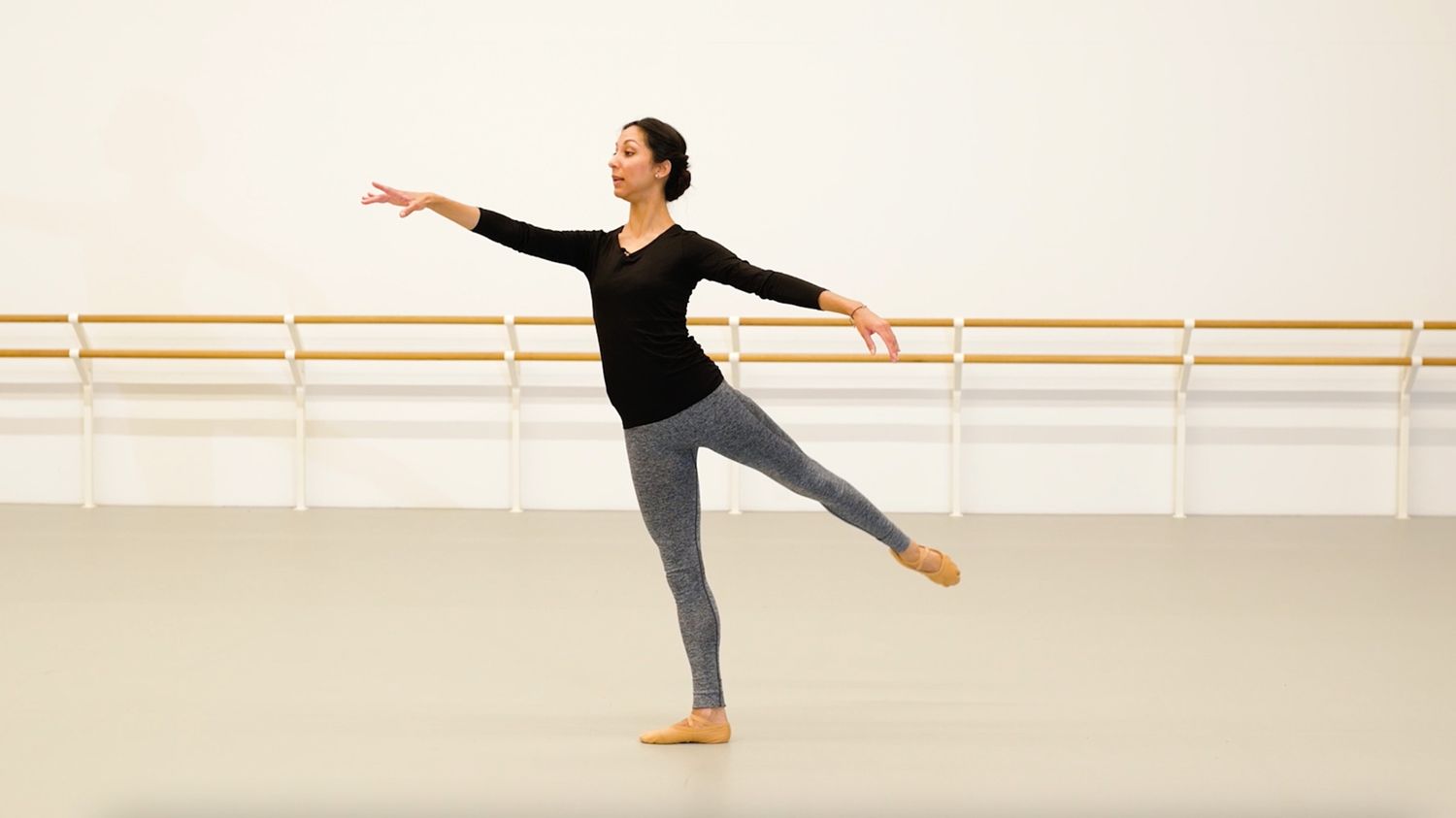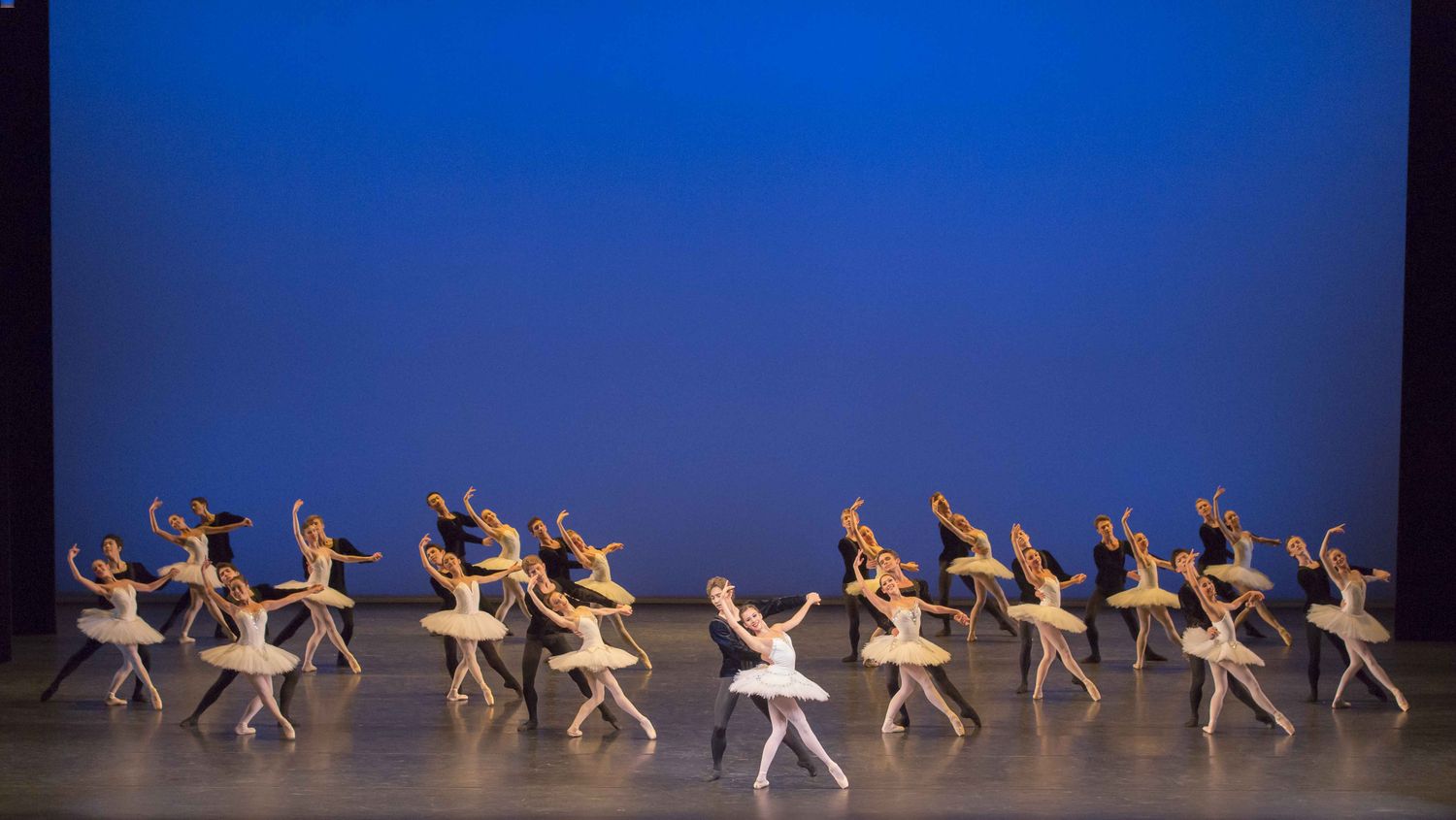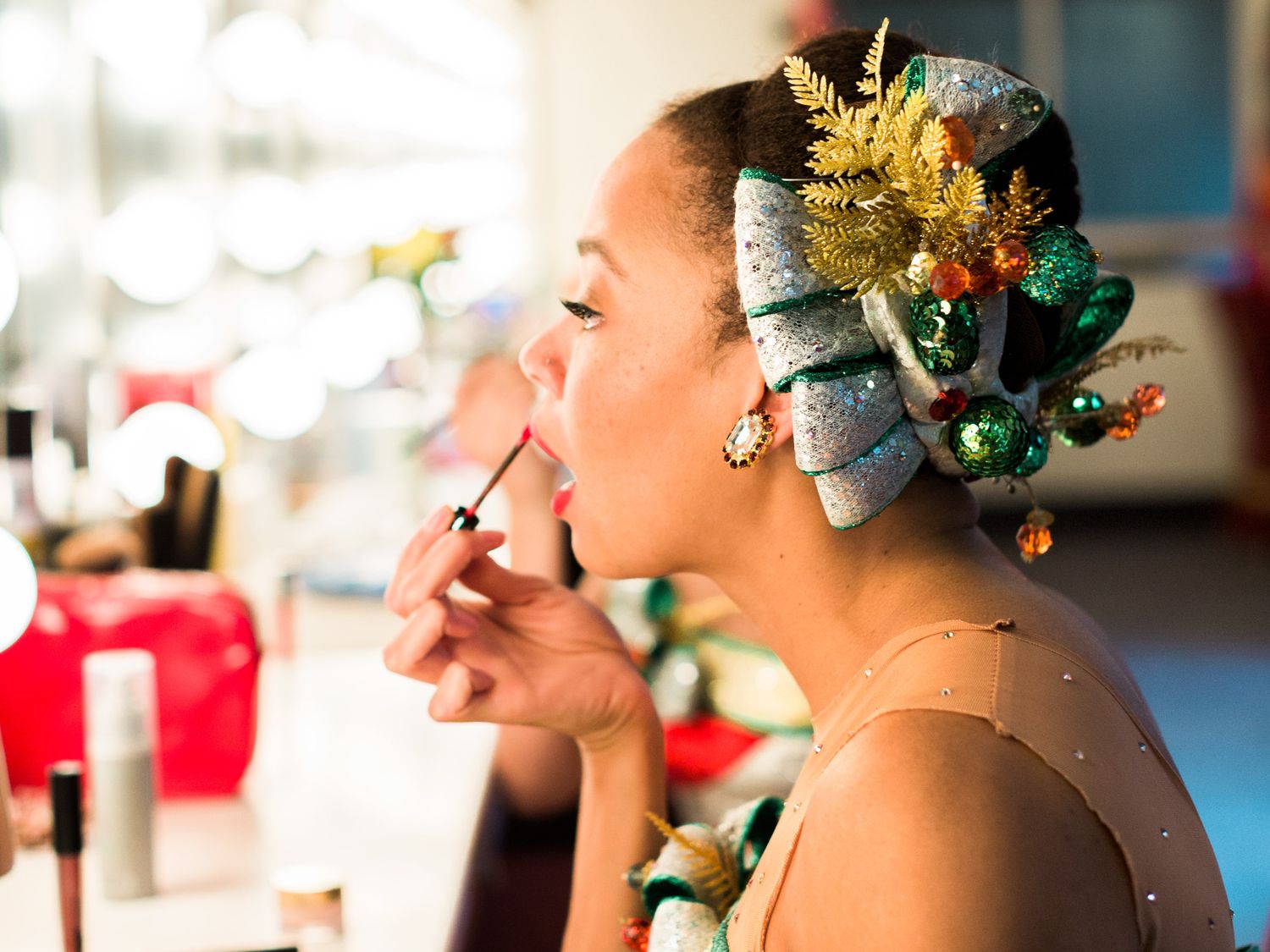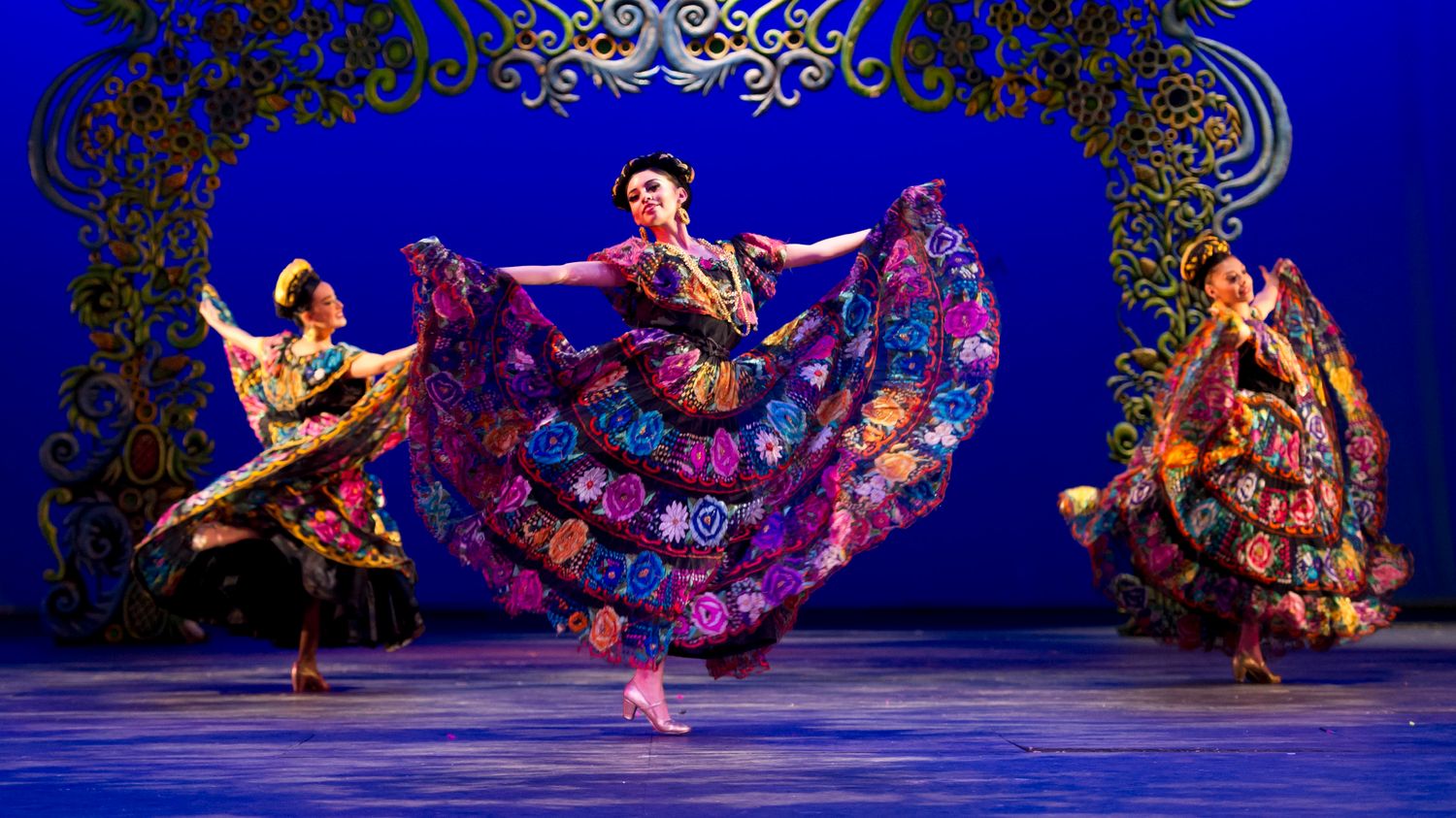Home>Events & Info>Ballet>What Is A Tendu In Ballet
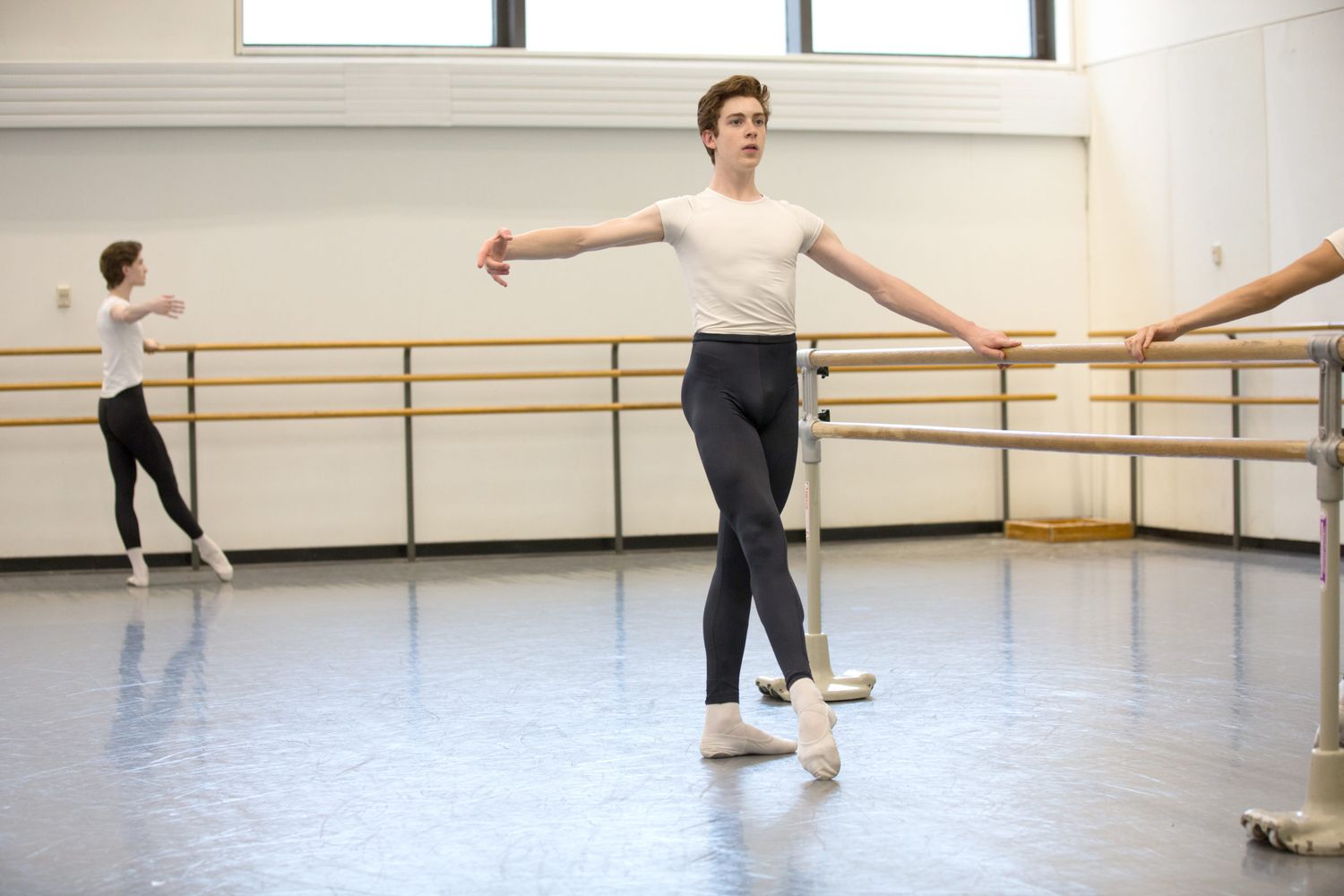

Ballet
What Is A Tendu In Ballet
Modified: January 22, 2024
Learn what a tendu is in the world of ballet and how it is used to strengthen and align the body. Discover the fundamental movements in ballet and enhance your understanding of this graceful art form.
(Many of the links in this article redirect to a specific reviewed product. Your purchase of these products through affiliate links helps to generate commission for AudioLover.com, at no extra cost. Learn more)
Table of Contents
Introduction
Ballet is a timeless art form that has captivated audiences for centuries. Its grace, precision, and beauty make it a highly revered and demanding dance style. One of the fundamental movements in ballet is the tendu, pronounced “ton-doo.” The tendu is a French term that means “stretched” or “stretched out.”
As a basic ballet step, the tendu is crucial and serves as the foundation for many other movements and combinations. It may appear simple at first glance, but mastering the tendu requires proper technique, control, and alignment. It is through the tendu that dancers develop the strength, flexibility, and artistry necessary to perform more complex ballet sequences.
In this article, we will delve deeper into the definition, technique, and significance of the tendu in ballet. We will explore its variations, common mistakes to avoid, and provide insightful tips for improving your tendu.
Whether you are a beginner aspiring to become a ballet dancer or a seasoned professional looking to refine your skills, understanding and honing the tendu will undoubtedly enhance your overall performance and artistry on the ballet stage.
Definition of a Tendu
In ballet, a tendu is a fundamental movement that involves the stretching of the leg and foot. It is typically performed while standing in one place, with one leg supporting the body’s weight and the other leg extending outwards. The working leg moves along the floor, maintaining contact with the floor as it slides or brushes outwards.
The purpose of the tendu is to develop strength, flexibility, and coordination in the leg and foot. It helps dancers to articulate and control their movements from the core to the extremities. The tendu is often considered the “building block” of ballet, as it forms the basis for various other movements such as walks, jumps, and turns.
There are two main types of tendu commonly used in ballet: the tendu à terre and the tendu en l’air. The tendu à terre, meaning “on the ground,” refers to the movement where the working foot remains in contact with the floor throughout the entire motion. The tendu en l’air, meaning “in the air,” involves the working foot lifting off the ground.
While the tendu may seem like a simple action of extending the leg, its execution requires a combination of proper alignment, muscular engagement, and control. Dancers must maintain a strong core, lengthen through their spine, engage the muscles of their standing leg, and articulate their foot and toes precisely as they move the working leg.
A correctly executed tendu showcases the dancer’s strength, flexibility, and impeccable technique. It allows for a beautiful line and extension of the leg, with the foot pointing and elongating through the ankle and toes. The tendu is often used as a preparation for more complex steps, providing a seamless transition between movements in ballet combinations.
Overall, the tendu is a fundamental element of ballet technique, emphasizes the importance of proper alignment, strength, and control in every movement. It forms the foundation upon which dancers build their skills and develop the precision and artistry required for the demanding world of ballet.
Technique and Execution
Executing a tendu in ballet requires attention to detail and precise technique. Here is a step-by-step guide on how to perform a tendu:
- Start in a standing position with your feet turned out in the first or fifth ballet position. Maintain a tall posture with your shoulders relaxed and core engaged.
- Transfer your weight onto one leg while keeping the other leg straight and stretched.
- Initiate the tendu by pointing the working foot’s toes and brushing it along the floor away from the standing leg.
- As you extend the foot, maintain contact with the floor and lengthen through the ankle. Imagine reaching your toes towards a point on the floor as far away from you as possible, creating a long and elegant line.
- Simultaneously, engage the muscles in your standing leg to maintain stability and alignment. Keep your hips square and avoid shifting your weight to one side.
- Continue the tendu until the foot is fully extended, with the toes pointing away from the body and maintaining a strong and elongated line.
- To bring the foot back, gradually reverse the movement by flexing the foot, moving through a pointed position, and sliding it back to the starting position. The working foot should stay in contact with the floor throughout the entire motion.
It’s important to note that proper alignment and technique are crucial for a successful tendu. Here are some key points to keep in mind:
- Maintain a neutral pelvis and lengthen through the spine throughout the tendu.
- Keep the working leg fully stretched, with the knee straight and the foot articulating through the movement.
- Avoid sickling or winging the foot, and strive to keep the foot in line with the leg.
- Engage the muscles of the core and standing leg to provide stability and support.
- Focus on smooth and controlled movements, maintaining a sense of grace and fluidity.
Remember, the tendu is not just a motion of the leg; it requires the integration of the entire body to execute it flawlessly. Practice regularly to improve your technique, control, and precision in performing the tendu.
Importance of Tendu in Ballet Training
The tendu is an essential element in ballet training for several reasons. It serves as a foundational exercise that helps dancers develop strength, flexibility, coordination, and artistry. Here are some key reasons why the tendu is of utmost importance:
1. Building Strength:
Tendus engage various muscle groups, including the core, legs, and feet. Performing tendus regularly helps to strengthen these muscles, enabling dancers to execute more complex movements with power and control.
2. Enhancing Flexibility:
By elongating and stretching the leg and foot during the tendu, dancers can improve their flexibility and extension. Regular practice of tendus helps to lengthen the muscles and increase the range of motion, vital for executing high extensions and graceful movements in ballet.
3. Developing Coordination:
The tendu requires precise coordination between the upper body, core, standing leg, and working leg. Dancers need to synchronize their movements to create a seamless and fluid tendu. Through consistent practice, dancers can improve their coordination and body awareness, facilitating the execution of complex ballet choreography.
4. Refining Technique:
The tendu is a movement that demands attention to detail and proper technique. It teaches dancers the importance of alignment, control, and articulation of the foot. By honing their tendu technique, dancers develop the necessary skills for executing other ballet movements with precision and finesse.
5. Artistic Expression:
While technique is integral to ballet, artistry is equally important. The tendu serves as a canvas for dancers to express their individuality and artistry. It allows for subtle nuances in phrasing, dynamics, and musicality. Dancers can experiment with the quality of their tendus, exploring different dynamics to convey emotion and storytelling.
Overall, the tendu plays a vital role in ballet training as it sets the foundation for other movements and helps dancers develop the strength, flexibility, coordination, and artistry necessary to excel in this demanding art form. By mastering the tendu, dancers can achieve a higher level of technical proficiency and artistic expression, enabling them to captivate audiences with their grace and beauty on the ballet stage.
Variations and Styles of Tendu
The tendu may seem like a simple movement, but it can be executed in various ways, depending on the style and technique of ballet. Here are some variations and styles of tendu commonly found in ballet:
1. Classical Tendu:
In the classical ballet style, the tendu is performed with precision and correct alignment. The working foot extends along the floor, maintaining contact throughout the movement. The dancer focuses on lengthening the leg, pointing the foot, and articulating the toes to create a clean and elongated line.
2. Balanchine Tendu:
George Balanchine, a renowned ballet choreographer, developed his own style of tendu. In the Balanchine technique, the tendu is executed with a quick and sharp movement. The dancer aims to create a sense of energy and attack, while still maintaining proper alignment and foot articulation.
3. Cecchetti Tendu:
The Cecchetti method, named after the Italian ballet master Enrico Cecchetti, emphasizes a strong foundation of technique. In Cecchetti tendu, dancers focus on maintaining stability and control while executing the movement. The tendu is performed precisely, with attention to detail in the alignment and placement of the body.
4. Contemporary Tendu:
In contemporary ballet, tendus may be mixed with elements from modern dance. While still maintaining the basic principles of tendu, contemporary dancers may add their own artistic interpretation to the movement. This can include more fluid and expansive arm movements, intermingling with the tendu of the leg.
5. Jazz Tendu:
In jazz dance, tendus often have a more stylized and rhythmic quality. The movement may be performed with a sharper extension of the leg and a more relaxed approach to the foot articulation. Jazz tendus allow for greater freedom, allowing dancers to showcase their individual style and flair.
These variations and styles of tendu highlight the versatility and adaptability of the movement within different ballet techniques and genres. Dancers may encounter different approaches to tendu depending on their training and the choreography they are performing. By exploring these variations, dancers can expand their understanding and versatility in executing the tendu with precision and artistic expression.
Common Mistakes to Avoid in Tendu
The tendu is a fundamental movement in ballet, and while it may appear simple, there are common mistakes that dancers should be aware of and strive to avoid. Understanding and correcting these errors will help dancers execute the tendu with proper technique and alignment. Here are some common mistakes to watch out for:
1. Incorrect Alignment:
A common mistake in tendu is improper alignment of the body. It is important to maintain a neutral pelvis, lengthen through the spine, and avoid leaning or tilting the upper body to one side. Keep the hips squared and ensure that the working leg stays in line with the body, promoting proper alignment and preventing any strain or imbalance.
2. Lack of Foot Articulation:
In the tendu, the foot should be fully stretched and articulate through the movement. Avoid pointing the toes without engaging the other muscles of the foot. Instead, focus on creating a smooth and controlled movement, rolling through the foot and elongating the leg fully.
3. Insufficient Core Engagement:
Many dancers neglect their core engagement during tendus, leading to a lack of stability and control. Activating the core muscles helps maintain balance and proper alignment throughout the movement. Always remember to engage the abdominals and maintain a strong core connection during tendus.
4. Rushing the Movement:
Another common mistake is rushing through the tendu, neglecting the importance of control and precision. Take the time to fully extend the leg, maintaining contact with the floor and elongating through the foot. Avoid rushing or throwing the leg out and instead focus on the gradual and deliberate execution of the tendu.
5. Neglecting Arm Placement:
While tendu primarily focuses on the movement of the legs and feet, the placement of the arms is equally important. Neglecting proper arm placement can disrupt the overall balance and aesthetic of the tendu. Pay attention to the position of your arms, allowing them to flow naturally and enhance the movement.
By being aware of these common mistakes and actively working to correct them, dancers can refine their technique and ultimately improve their tendu. Take the time to practice the correct alignment, foot articulation, core engagement, and arm placement in order to execute the tendu with grace, precision, and proper technique.
Tips for Improving Tendu
The tendu is a foundational movement in ballet, and refining your execution of this step will enhance your overall technique and artistry. Here are some tips for improving your tendu:
1. Focus on Alignment:
Paying attention to your alignment is crucial for a successful tendu. Ensure that your pelvis is neutral, your shoulders are relaxed, and your spine is lengthened. Keep your hips square and maintain a straight line from your head to your toes. Proper alignment will improve the quality and aesthetics of your tendu.
2. Strengthen the Supporting Leg:
Your supporting leg provides the foundation and stability for the tendu. Strengthen the muscles of the standing leg to maintain balance and control. Focus on engaging the quadriceps, hamstrings, and inner thighs to create a solid base for the tendu.
3. Develop Foot Articulation:
The tendu requires precise and articulate movements of the foot. Practice exercises that develop the strength and flexibility of your feet and ankles. Strengthen the intrinsic muscles of your feet and work on pointing your toes with control and precision. This will enhance the elegance and line of your tendu.
4. Incorporate Slow Tendus:
In addition to practicing tendus at a regular tempo, incorporate slow tendus into your training. Slowing down the movement allows you to focus on the alignment, weight distribution, and foot articulation in more detail. This can help you refine your technique and develop a deeper understanding of the tendu.
5. Pay Attention to Musicality:
Bring musicality into your tendus by connecting the movement to the music. Listen to the rhythm and phrasing of the music and match your tendus accordingly. Explore different dynamics and accents, ranging from gentle and delicate to more powerful and decisive. This will add a layer of expressiveness and artistry to your tendus.
6. Practice Mindfully:
Approach your tendu practice with mindfulness and intention. Focus on your body alignment, muscle engagement, and the quality of your movements. Be present and strive for precision, control, and elegance in each tendu. This intentional practice will accelerate your progress and help you develop a strong and polished tendu.
Improving your tendu is an ongoing process that requires consistent practice and attention to detail. By implementing these tips, you can enhance your technique and execution of this essential ballet movement. Remember to stay patient, diligent, and dedicated in your training, as mastering the tendu will contribute to the overall strength, flexibility, and artistry of your dancing.
Conclusion
The tendu is a fundamental movement in ballet that serves as a building block for dancers of all levels. Its importance lies not only in its technical execution but also in the development of strength, flexibility, coordination, and artistry. By mastering the tendu, dancers lay the groundwork for more complex movements and cultivate the precision and control necessary to excel in the demanding world of ballet.
Throughout this article, we’ve explored the definition of a tendu, its proper technique and execution, and its significance in ballet training. We’ve discussed variations and styles of tendu, common mistakes to avoid, and provided valuable tips for improving this fundamental step.
From the classical tendu to the Balanchine and Cecchetti styles, understanding the intricacies of each variation empowers dancers to adapt and execute the tendu according to the requirements of different choreography and ballet techniques. Moreover, being mindful of common mistakes allows dancers to correct and refine their technique for a more polished performance.
Remember, improving your tendu takes time, patience, and dedication. Regular practice, along with a focus on alignment, foot articulation, core engagement, and musicality, will contribute to the mastery of this essential ballet movement. Continually seeking refinement and growth in your tendu will not only enhance your overall technique but also elevate your ability to express yourself artistically on the ballet stage.
So, whether you are a beginner just starting your journey in ballet or an experienced dancer looking to perfect your tendu, embrace the challenge and joy that this foundational step brings. With perseverance, commitment, and the guidance provided in this article, your tendu will evolve into a beautiful expression of strength, grace, and artistry in the captivating world of ballet.

